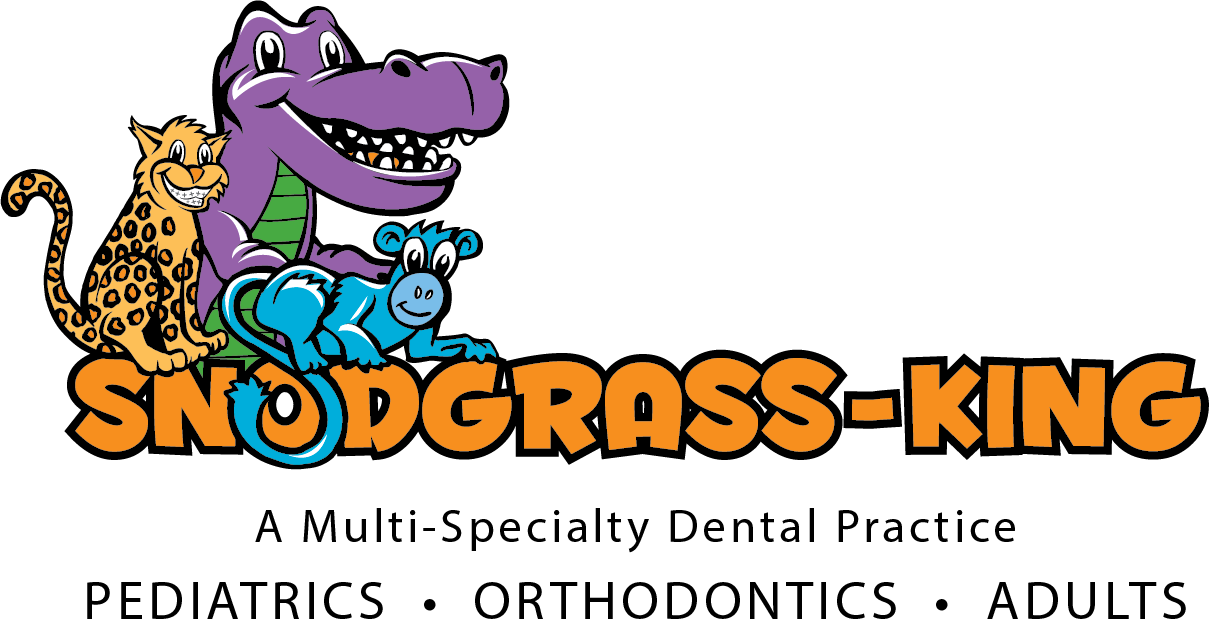At Snodgrass-King Dental we believe in the tell-show-do method. We strive to talk to the patient about what they can expect step-by-step. We will allow them to see the instruments and hear the sounds they can make to eliminate surprise. Then we do what they are expecting! We find that it makes our patients more comfortable at their dental visits.
What to Expect
We are excited to have you join us at Snodgrass-King Dental. To serve you best, we ask that you arrive at least 15 minutes early for your scheduled appointment. If you have dental insurance please have the most up-to-date insurance card and information available.
If your child is over the age of four, we start with brushing and flossing instructions. With the parent accompanying the patient, we will go over the most effective way to excel in oral hygiene. We will then proceed to take both cavity detecting and growth development x-rays if they are needed. After the hygienist thoroughly cleans your son or daughter’s teeth, you will be present while the dentist does his/her examination. This will enable you to meet the dentist, get first-hand knowledge of your child’s progress and ask any questions that you may have. The process is very similar to your own experience at the dentist, with the exception of a more kid-friendly environment.
If the patient is under the age of four, the process is a little different. You are welcome to join your child in a room more suitable for babies and toddlers. They, as any of our patients, will be able to watch cartoons or movies during their cleaning. For our younger patients, an extensive toothbrush prophy (cleaning) is done. We will use polishing paste and a toothbrush to effectively treat your child’s teeth. As recommended by the American Dental Association a topical fluoride application will be administered to help prevent decay and promote strong teeth. The dentist will then do an exam and will help you access your child’s overall oral hygiene.
Dental Recommendations From The American Academy of Pediatric Dentistry
- Regular dental care for children beginning at the eruption of the first tooth.
- Regular 6 month dental checkups for cavity detection and fluoride application.
- Dental sealants on all 6 year molars no later than age seven.
- An orthodontic screening by age seven
Preventive Dental Questions
At what age should my child first visit a pediatric dentist?
The American Academy of Pediatric Dentistry and our practice recommends that parents bring their child for their first dental visit as soon as the first baby tooth erupts, around age six months. The primary reason for this is so we can properly educate the parents on preventive measures that every child’s parent should know and understand.
Since baby teeth are going to be lost anyway, why do they need to be treated when there are cavities?
Baby teeth are not only extremely important for a child’s chewing, pretty smile, and overall well being, they represent the foundation for the permanent teeth. The existence of baby teeth and their root structures guide the proper eruption of permanent teeth. If certain baby teeth are lost prematurely due to cavities, etc., the child will almost certainly lose permanent teeth because of the lost baby tooth.
What are the differences in the anatomy of baby teeth vs. permanent teeth?
Baby teeth are much smaller and whiter than permanent teeth. They also have thinner enamel making them more susceptible to decay and the dental pulp chambers (nerves) of baby teeth are much larger in comparison to permanent teeth.
How important is a child’s regular dental checkups?
If you want your child to have a chance to grow up without cavities and a smile that will enhance their well-being and future, then regular six-month dental checkups are a priority. Six-month dental checkups are important because children grow and change rapidly. Also, the topical preventive fluoride treatments last for about six months and need to be repeated in order to have a lasting effect at preventing cavities.
How important is brushing and flossing for a young child?
The parent, not the child, should be responsible for seeing that a child’s teeth are cleaned properly on a daily basis. When a child is around four, he/she should brush with supervision once daily and the parent should always brush and floss the child’s teeth before putting them to bed.
Flossing must begin as soon as any teeth touch. This could be as early as 18 months. Parents should always floss baby teeth to prevent interproximal decay. Parents need to floss their own teeth to prevent gum disease.
What are dental sealants and why are they important for permanent teeth?
Usually, the first area that we see cavities are in the pit and fissure areas of the permanent six year molars. A dental sealant is a hard plastic coating that is placed in these pit and fissure areas to seal and protect the tooth from cavities. For many reasons, sealants are usually placed on the chewing surfaces of permanent, not baby teeth. Sealants can be placed on baby teeth by request, but it is much more important from a decay standpoint for parents to brush, floss, and pay attention to a child’s diet.
What is the purpose of a space maintainer?
Because permanent teeth develop under baby teeth, if a baby tooth is lost prematurely adequate space and guidance for the underlying permanent tooth will be lost. Without a space maintainer to maintain the space for the permanent teeth, the permanent tooth will become impacted and have to be extracted.
Restorative Procedure Questions
How long will my child be numb after treatment?
The local anesthetic will last for approximately 2 to 3 hours. When the feeling begins to return, a child often wants to bite their cheek, tongue, and gums to relieve the tingling sensation. We ask the parent to have the child hold air in their mouths like they are blowing bubbles. This keeps them from biting and comforts this tingling feeling.
Why do baby teeth often need a stainless steel crown to properly restore the tooth?
Complex and multiple surface fillings whether they are white fillings or silver fillings are simply contraindicated for restoring posterior primary molars. Research has shown that 75 to 85% of these fillings fail within two years of placement. The failure of these type fillings often means extracting a baby tooth prematurely and placing a space maintainer.
How do you keep my child comfortable during a restorative procedure?
We have four methods:
- Tell, Show, and Do
- Gas (Nitrous Oxide)
- Mild Sedation
- General Anesthesia (In the Hospital)
In our practice, we use option #2 combined with option #3. This is by far the best option for your child. The sedation acts to relax and calm your child. In many cases, the children have very little memory of their treatment due to the sedation. It decreases postoperative complications and minimizes their treatment visits. We very strongly believe that children need to enjoy coming to the dentist.

